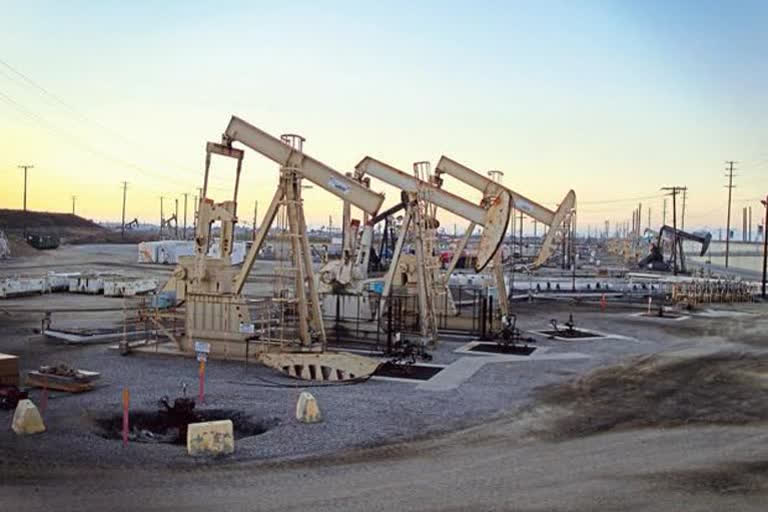New York: With a barrel of crude oil costing less than a New York pizza, many U.S. shale producers are being pushed to the brink of bankruptcy and experts are wondering when, and if, the oil industry will recover.
The price of benchmark U.S. crude oil closed at USD12.34 a barrel Tuesday. At the start of the year, the price was around USD60.
Demand for oil has been decimated by the coronavirus pandemic, especially as shelter-in-place orders reverberated around the globe. International travel, certainly by air, has essentially ceased, and that's shocking, said Jim Burkhard, vice president, IHS Markit.
The Energy Information Administration expects jet fuel use to fall 34% in the second quarter. In addition, the agency expects gasoline use to drop by 25% from April to June as drivers stay home instead of hitting the road during warmer weather.
Oil prices were declining even before the pandemic hit as producers flooded the market with more oil than the world could use. Now, as demand shrinks, the industry is running out of places to store it.
As the downturn wears on, oil producers are dramatically curtailing their plans to drill for new oil and some have announced they're shutting in wells that were already producing, a process that could damage oil fields.
Will the US oil industry recover?
No one can predict the future, but sustained low prices are likely to have a lasting impact on the U.S. oil industry.
Prices are too low for most oil companies to drill new wells, and the amount of oil that existing wells generate declines over time.
When oil companies stop drilling, that leads to long-term production declines.
IHS Markit suggests U.S. oil production could decline by 3 million barrels per day to 10 million by the end of this year, and could decline further to 9 million barrels per day in 2021.
U.S. oil production might not return to the same levels it enjoyed before the coronavirus hit, and 2019 may have been the peak of global oil consumption, Burkhard said.
Read more:Govt continuously taking steps to benefit the farmer: PM Modi
"U.S. production is going to get hit hard, Burkhard said. Once you stop drilling, you have these very rapid decline rates that you don't have anywhere else in the world.
Many producers in the U.S. are shale producers, and their wells cost more to operate than traditional oil drilling.
Their wells also produce most of their oil in the first few years; after that, production drops off dramatically, so when drilling stops that leads to rapid declines.
How much has production declined?
In March, drilling for oil was down 25% compared to last year, according to oil field service company Baker Hughes. And things have only gotten worse since.
March began with oil trading at around USD43 a barrel and ended at USD20. In April, oil prices dropped to a low of USD6.50 a barrel and before bouncing back to the teens.
Oil companies have cut USD80 billion from capital spending budgets this year, with about USD36 billion of those cuts coming from the U.S., said Chris Midgley, global head of analytics at S&P Global Platts.
Major oil companies like Exxon with diversified businesses will survive, but smaller oil producers are going to have a harder time.
They just don't have a lot of alternatives to stay in business once they stop production, said Richard Marshall, head of global oil and gas industry practice at Nakisa.
Many producers, especially shale companies, took on a lot of debt to finance operations and can only make ends meet at about USD40 a barrel.
In the shale industry, about USD20 billion in debt will come due in 2021 and USD30 billion in 2022, Midgley said.
The heavily-indebted companies are going to have to refinance in an environment where the availability of capital is constrained, he said.
The signs are already showing. Whiting Petroleum, a shale producer, filed for bankruptcy protection earlier this month, followed by Diamond Offshore Drilling.
Parsley Energy, a mid-sized fracking company, lost half its market value since the year began and told regulators it has been shutting down enough wells to take about 400 barrels of oil per day off the market.
Continental Resources, another shale oil producer, announced it would suspend its quarterly dividend.
Smaller producers will likely be bought by larger companies that are better equipped to weather the storm. We will see more consolidation of the industry, Midgley said. We'll probably see more bankruptcies.
(AP Report)



